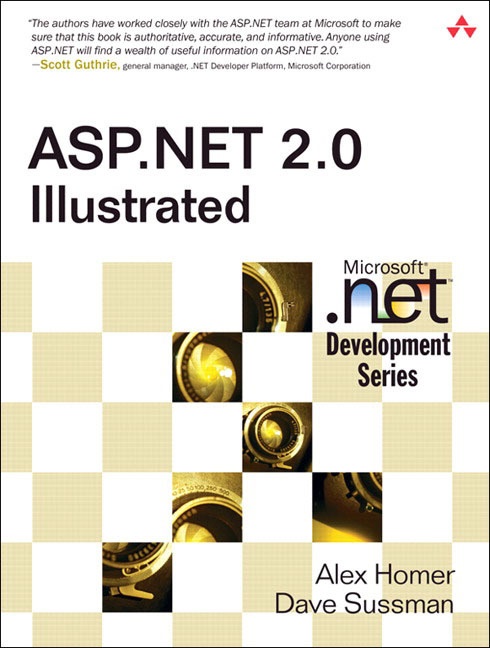Read more
Figures xix Tables xxix Preface xxxi Acknowledgments xxxiii About the Authors xxxv 1. Technology, Tools, and Getting Started 1 New Features of ASP.NET 2.0 2 Changes from Version 1.x 19 Obtaining and Installing .NET 2.0 19 Upgrading and Deploying Applications 21 Installing the Samples 21 Summary 22 2 Is It Really This Easy? 23 A Day in the Life of a Developer 24 Summary 52 3 Data Source and Data Display Controls 53 Databases and Connections 54 Data Source Controls 59 Data Display and Edit Controls 72 Summary 104 4 Data Binding to Business Objects 105 Two- and Three-Tier Architecture 106 The ObjectDataSource Control 113 Typed Data Sets 122 Summary 131 5 Advanced Data and Page Techniques 133 DataSource Control Events 134 GridView and DetailsView Events 144 Handling Data Editing Conflicts 145 SQL Server 2005 User-De*ned Types 159 Additions to UDTs 168 Summary 176 6 Data and Output Caching 177 Application, Session, HttpContext, and ViewState Caching 178 Output Caching 185 Data Caching 195 The Cache API 210 When to Use Caching 216 Summary 218 7 Working with XML 219 Working with XML in Visual Studio 2005 220 Databinding and Displaying XML Data 222 Transforming XML 230 Working with Raw XML 236 Converting between XML and Relational Data 247 Working with SQL Server 2005 XML Data 248 Summary 255 8 Building Interactive Web Forms 257 The ASP.NET Control Set 258 The ASP.NET Page and Postback Model 306 Summary 308 9 The Page Class and Master Pages 309 The HttpRequest, HttpResponse, HttpServerUtility, and HttpContext Classes 310 The ASP.NET Page Class 319 Sub-Classing the Page Object 343 Working with Master Pages 344 Summary 351 10 Web Site Navigation Techniques 353 Simple Navigation with Hyperlinks 354 Navigation with LinkButton Controls 358 Navigation through Browser Redirection 366 Navigation through Server-Side Redirection 369 Cross-Page Posting of Form Contents 377 Site Maps, Menus, and Navigation Path Controls 381 Summary 393 11 Security and Membership 395 Preventing Anonymous Access to Web Sites 396 ASP.NET Membership Provider and Role Manager 408 The ASP.NET Web Site Administration Tool 414 The ASP.NET Security Server Controls 441 Accessing the Membership and Roles Features in Code 451 Summary 457 12 Profiles, Personalization, and Themes 459 Configuring Profiles and Personalization 460 Storing and Using Dynamic Profile Data 471 A Simple Example of Using a Shopping Cart 474 Using Themes to Personalize Your Site 487 Summary 503 13 Building Web Portals 505 The ASP.NET 2.0 Portal Framework 506 The WebPart Manager 509 WebParts and Authorization 512 Zones and WebParts 513 Catalog Zones 523 Editor Zones 525 Connecting WebParts Together 533 Summary 545 14 Usability, Accessibility, Mobile Devices, Localization 547 Page Validation, Browser Capabilities, and Alternative Content 548 Making Your Pages Easier to Use 559 Supporting Disabled Users and Specialist User Agents 562 Building Pages for Small-Screen and Mobile Devices 587 Supporting Localization and Multiple Languages 600 Summary 616 15 Using the Framework Classes 619 The Example Application 620 Storing Data with the System.Collections Classes 628 Reading, Writing, and Compressing Data with the System.IO Classes 638 Creating Graphics and Images with the System.Drawing Classes 652 Accessing the...

